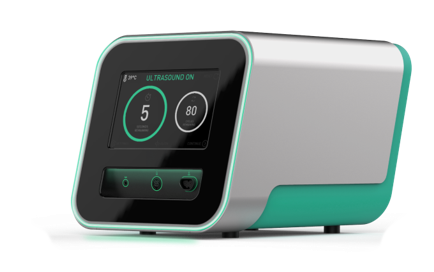Our Technology

The Problem: Kidney Stones are Common and Debilitating
In the U.S., kidney stones are responsible for more than two million emergency room visits per year. On average, approximately one million shockwave and laser lithotripsy procedures are completed every year, consuming valuable healthcare resources. Many patients wait at home to pass their stone leaning on opioids to manage excruciating pain. Those requiring procedures often face over-burdened operating room scheduling, increasing their risk of long-term kidney damage, infection, and recurring ER visits. Patients undergoing procedures are subjected to general anesthesia, multiple exposures of fluoroscopy, and often travel long distances to a larger metropolitan area to get the care they need.
The current standard of care for treating kidney stone disease is inequitable and inadequate.

A Powerful New Method Designed to Eliminate Kidney Stones
Avvio Medical’s patented technology is designed to revolutionize kidney stone treatment by bringing a new method of relief to a convenient office setting. Treatment can be available soon after diagnosis, reducing long wait-times and operating room procedures.
The Acoustic Cavitation Lithotripsy System by Avvio Medical is designed to facilitate and enable office-based procedures by integrating a console and hand-held treatment head that aims low-pressure ultrasound through the skin. An innovative trackable ureteral catheter is designed to align the treatment head’s acoustic beam to actuate microbubble cavitation for kidney stone treatment.


Acoustically Enhanced Microbubbles with External Ultrasound
The Acoustic Cavitation Lithotripsy System by Avvio Medical uses proprietary low-pressure ultrasound to treat stones that have entered and become stuck in the ureter. This treatment method is designed to be carried out in the urologist’s office without anesthesia or imaging to provide relief to many patients who are normally sent home with narcotics and asked to wait days or weeks for the stone to pass naturally.
Acoustically Enhanced Microbubbles with URS-LL
When subjected to acoustic impulses from Ureteroscopy Laser Lithotripsy (URS-LL) or other therapies, Avvio Medical’s acoustically enhanced microbubbles produce rapid, large‐amplitude expansions and contractions, then a final collapse. This collapse near a hard surface triggers inertial cavitation, which causes erosion and fragmentation of the stone. The video below is recorded from a URS-LL procedure with Avvio Medical’s acoustically enhanced microbubbles in a human subject.
The optical fiber is seen directing the laser light at the kidney stone. The acoustically enhanced microbubbles are visible as a milky cloud in the first few seconds of the video. At the 6th second, the laser begins to activate the fragmentation process, causing the formation and collapse of vapor bubbles to fragment the stone at the tip of the optical fiber. In parallel, our acoustically enhanced microbubbles are capturing energy from the laser and causing cavitation and fragmentation on all other surfaces of the stone, and on fragments as they move away from the optical fiber. The result is faster fragmentation, fewer and smaller fragments and better outcomes.
The high-speed microscope video on the left shows one side of an artificial kidney stone with Avvio Medical’s acoustically enhanced microbubbles all over the surface. An optical fiber from a pulsed laser is pointed at the opposite side, as would be the case during a normal URS-LL procedure. When the laser pulse forms a vapor bubble that expands and collapses on the opposite side, our acoustically enhanced microbubbles positioned all over all surfaces of the stone also expand and collapse, causing cavitation and erosion. In this case, we see that laser pulses targeting one side of a kidney stone can excite our acoustically enhanced microbubbles on the opposite side of the stone and can cause cavitation and erosion.
Publications
- Pishchalnikov YA, Behnke-Parks WM, Stoller ML. Plasma formation in holmium:YAG laser lithotripsy. Lasers Surg Med. 2023;55(5):503-514. doi:10.1002/lsm.23659
- Pishchalnikov YA, Behnke-Parks WM, Schmidmayer K, et al. High-speed video microscopy and numerical modeling of bubble dynamics near a surface of urinary stone. J Acoust Soc Am. 2019;146(1):516. doi:10.1121/1.5116693
- Pishchalnikov YA, Behnke-Parks W, Maeda K, et al. Experimental observations and numerical modeling of lipid-shell microbubbles with calcium-adhering moieties for minimally-invasive treatment of urinary stones. Proc Meet Acoust. 2018;35(1):020008. doi:10.1121/2.0000958
- Ramaswamy K, Marx V, Laser D, et al. Targeted microbubbles: a novel application for the treatment of kidney stones. BJU Int. 2015;116(1):9-16. doi:10.1111/bju.1299
